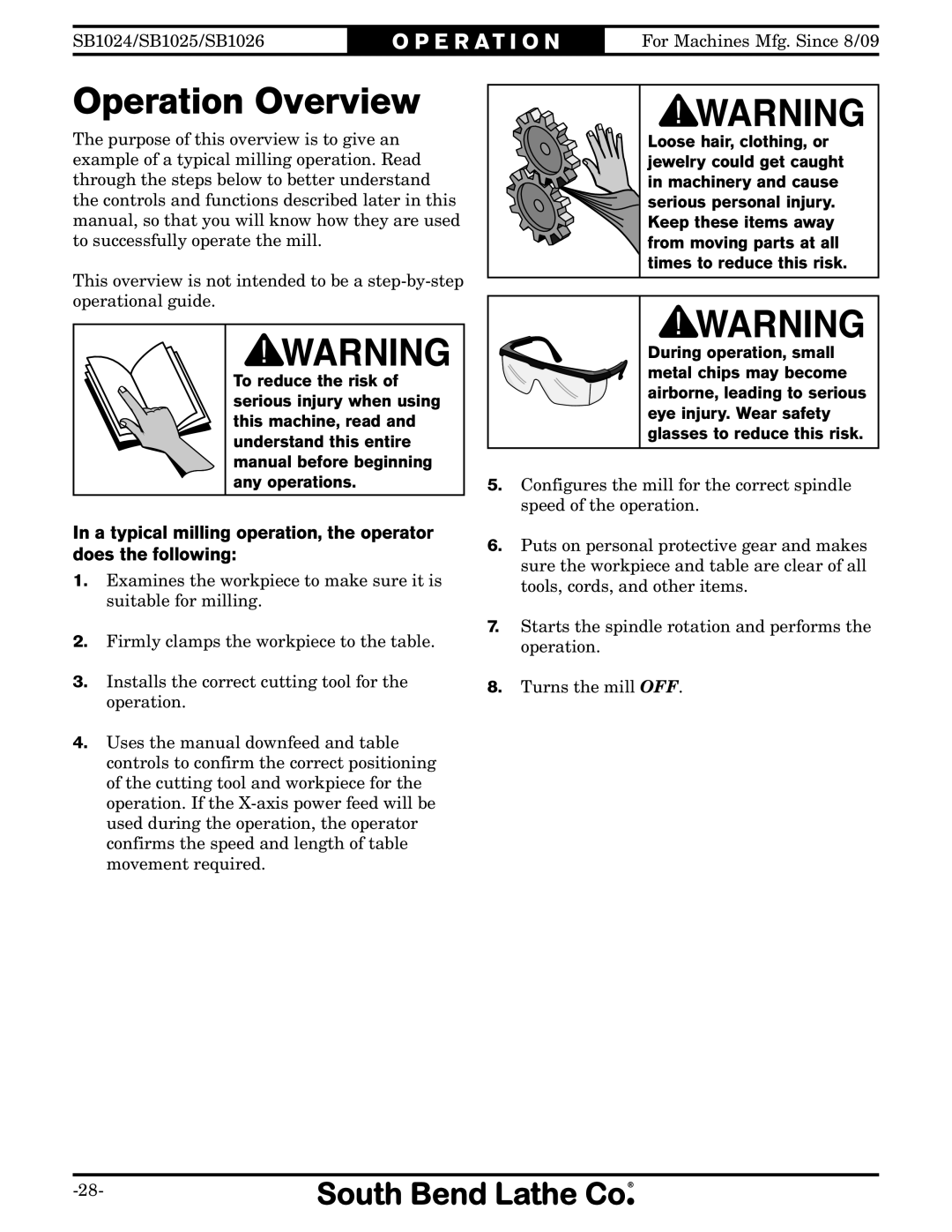
SB1024/SB1025/SB1026 | O P E R A T I O N | For Machines Mfg. Since 8/09 |
Operation Overview
The purpose of this overview is to give an example of a typical milling operation. Read through the steps below to better understand the controls and functions described later in this manual, so that you will know how they are used to successfully operate the mill.
This overview is not intended to be a
To reduce the risk of serious injury when using this machine, read and understand this entire manual before beginning any operations.
In a typical milling operation, the operator does the following:
1.Examines the workpiece to make sure it is suitable for milling.
2.Firmly clamps the workpiece to the table.
3.Installs the correct cutting tool for the operation.
4.Uses the manual downfeed and table controls to confirm the correct positioning of the cutting tool and workpiece for the operation. If the
Loose hair, clothing, or jewelry could get caught in machinery and cause serious personal injury. Keep these items away from moving parts at all times to reduce this risk.
During operation, small metal chips may become airborne, leading to serious eye injury. Wear safety glasses to reduce this risk.
5.Configures the mill for the correct spindle speed of the operation.
6.Puts on personal protective gear and makes sure the workpiece and table are clear of all tools, cords, and other items.
7.Starts the spindle rotation and performs the operation.
8.Turns the mill OFF.
